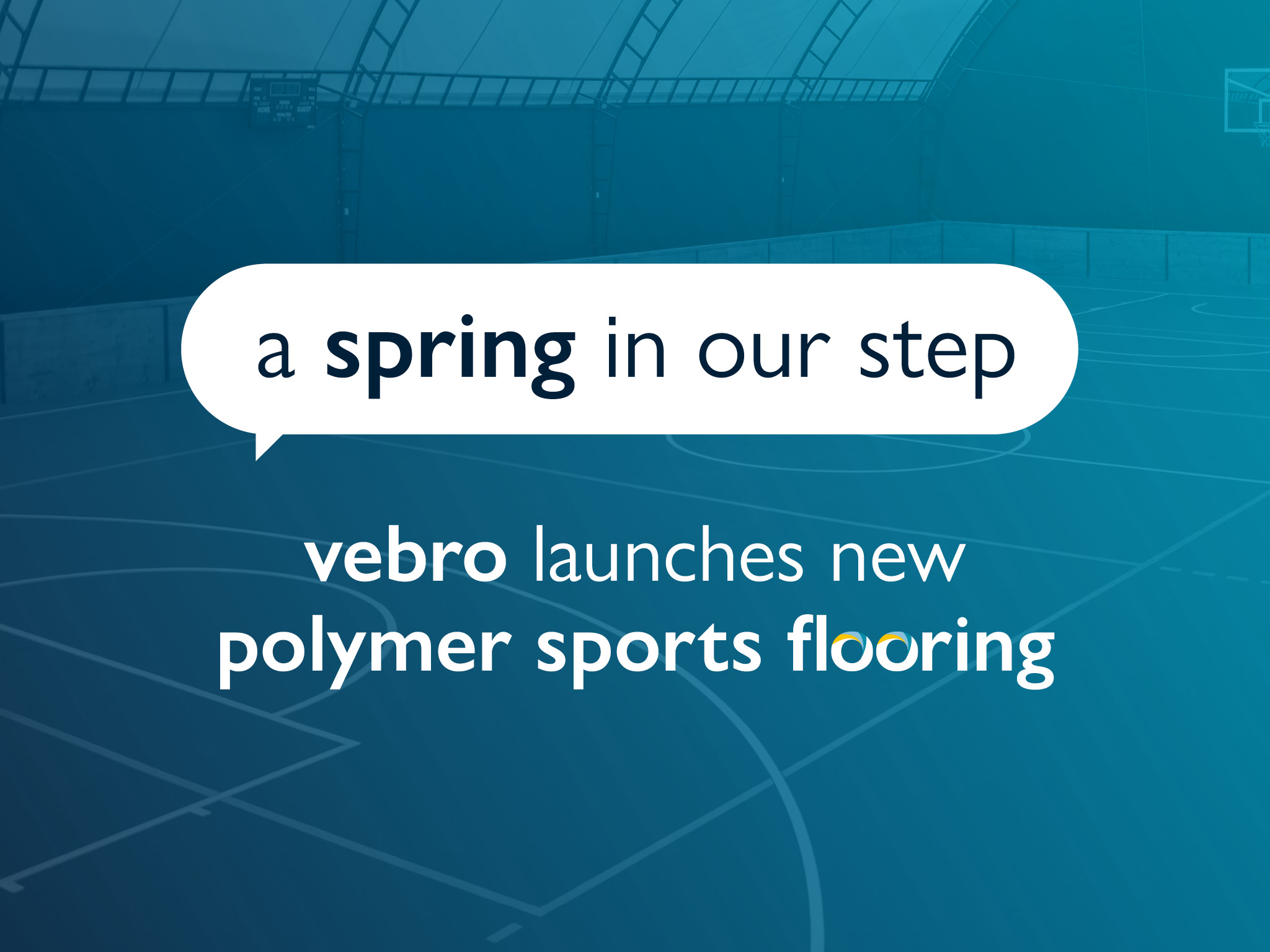Vebro Polymers has launched its brand new range of sports flooring systems, vebrosport CourtFloor Plus and vebrosport CourtFloor Eco, to the UK and European market.
Developed by Vebro’s Technical experts in response to demand from the company’s network of applicator partners, the launch of these multi-layer polyurethane sports floor systems opens up opportunities for installations in indoor and outdoor sporting facilities.
Both systems provide impermeability to water, scratch and abrasion resistance and seamless finishes that are easy to clean & maintain, as well as permanent elasticity and equal ball reflection.
As is typical with polymer flooring, vebrosport CourtFloor Plus, and its economical alternative vebrosport CourtFloor Eco, are both available in a wide range of colours, offering total flexibility for end-user clients who wish to create a space that is truly unique.
As a point elastic polyurethane sports flooring system, vebrosport CourtFloor Plus has uniform cushioning performance across the whole playing surface. Wherever the athlete is on the floor, they will experience the same shock absorption, ball rebound and vertical deformation. Because the area of deformation on point-elastic flooring is small – confined to the single point where weight applied to the surface – the surrounding areas of the floor remain relatively unchanged.
Point elastic flooring also helps to protect users against injury. The elasticity at the point of, and the small area around the impact point, acts like a shock absorber, reducing stress on joints, or the risk of injury in the event of falling.
For individuals involved in specifying sports court flooring solutions, the requirements set out EN 14904 will be of critical importance. The standard outlines a number of performance characteristics required by flooring designs chosen for courts and activity areas in sporting facilities.
Indentation resistance refers to the capability of the floor to recover after weight is applied and is typically measured by applying a load to the floor surface, then measuring the indentation 5 minutes after its removal. The mean residual indentation measured 24 hours after removal of the load should be equal to or less than 0.5 mm.
Vertical ball behaviour, according to EN 14904, is typically identified by dropping a standard basketball from a height of 1.8 m, and measuring the height to which it bounces and comparing that against height it reaches when dropped from the same height on concrete. The relative rebound height should be equal to or greater than 90% of the rebound height on concrete.
Rolling load resistance refers to the performance of the sports floor surface’s ability to recover from the rolling of weight across the surface of the floor. To meet the requirements set out in EN 14904, the minimum resistance should be 1,500 N, with a maximum indentation of 0.5 mm under a 300 mm straight edge, and a recovery time of between 15 and 20 minutes.
Download vebrosport CourtFloor technical data
| Title | Solutions | Applications | Download |
|---|---|---|---|
| vebrosport CourtFloor Eco | vebrosport | Commercial Venues, Institutional Buildings | ⬇ |
| vebrosport CourtFloor Plus | vebrosport | Commercial Venues, Institutional Buildings |
Looking for flooring that helps your sporting facility bounce back?
Contact the Vebro Polymers team in Manchester on hello@vebropolymers.com or +44 (0) 1618 738 396




